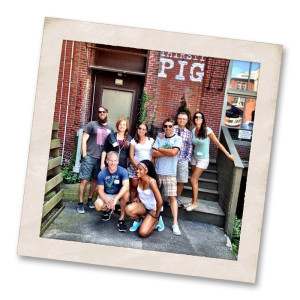Having a diverse workforce can be a challenge for small businesses, especially in certain parts of the U.S. or globally. To get the benefits of diversity, you may need to expand your thinking.
Many large companies must comply with corporate or even governmental diversity mandates.
They are also made up of such large workforces that it’s easy to cultivate a rich mixture of experiences and people.
But smart businesses—of any size—don’t view diversity as a requirement, but rather as an opportunity to grow and succeed. The variety of your employees’ backgrounds, cultures, and upbringings are a strategic advantage that you can tap into.
With that in mind, it may seem that a small business is at a disadvantage. It can be difficult, if you’re running a five or ten person shop, to be diverse. Making matters worse, many small business owners fall into the trap of hiring people who they like, and who are like them.
It gets even more challenging when you are drawing from an applicant pool that’s fairly homogenous. I discovered today that of Maine’s 1.3 million residents, over 96% are white.
What’s a small business to do?
Think beyond race.
Most Americans, when they hear “diversity,” think racial diversity. And that’s certainly a big part of it. In fact, race is still such a big issue in the U.S. that I worked on this paragraph for about fifteen minutes, concerned that it might be perceived as insensitive.
That’s certainly not my intent.
Working in a very small shop, or running a business in a homogenous part of the world, leads to a lack of unique perspectives inside your business. To develop that robust, dynamic approach to business, think beyond race.
- Do men and women have the same opportunity in your company?
- Is your company environment welcoming to gay, bisexual, and transgendered co-workers?
- Does everyone go to the same church as you, or do you pull from a wide variety of different houses of worship, including those who place science above religion?
- Have any of your employees served in the military or seen action?
- Did all of your employees grow up in your hometown, or do you have people from all over the state, country or globe?
- Does anyone have experience from a corporation? Has anyone been involved with a startup before? Has anyone run a non-profit?
- Is everyone a college graduate? Is anyone a college graduate?
- Do you have someone with an Obama sticker? Is there someone else with an impeach Obama sticker?
Further, do you have a corporate culture that welcomes new ways of thinking, or is your motto, “this is the way it’s always been done”?
Have you ever changed the way things have been done based on the suggestion of a new employee…perhaps in a way you weren’t entirely comfortable with?
Think beyond employees.
At flyte, we have seven or eight employees at any given time, but we have developed a great working relationship with a number of amazing independent contractors.
We like to think of them as extended family.
Your own workforce may be more than just your employees. It could include independent contractors or outside collaborators. You might find diversity in an advisory board you set up yourself, or in the mentors you seek out, or even the coaches you hire.
In a pinch, you can even pull in focus groups to help break up any group think you may be suffering from.
Think activities.
Although extra-curricular activities may not diversify your workforce, it can certainly help jolt your creative thinking and problem solving skills.
Next time, go beyond a company picnic and step out of your comfort zone. Take your team to a dance recital. Or a NASCAR event. Or an art exhibit. Or a Habitat for Humanity event. Or skeet shooting. Or a spelling bee. Or community theater.
Bonus points if one of your employees has a part in the play.
Just get your team to experience something new, and open themselves up to other world views.
The takeaway.
None of this should be taken as a way of avoiding hiring a diverse workforce. The point is, hiring a bunch of “you’s” follows the law of diminishing returns.
If you want to have a competitive advantage, you need new ideas and fresh perspectives. If you struggle to find that diversity because of a small workforce or unvaried applicant pool, you’ll need to consider new types of diversity and a wider definition of your workforce.
Further, you can maximize varied thinking through new experiences for your team.
What are you doing to generate the benefits of a diversified workforce? Let us know in the comments below.
